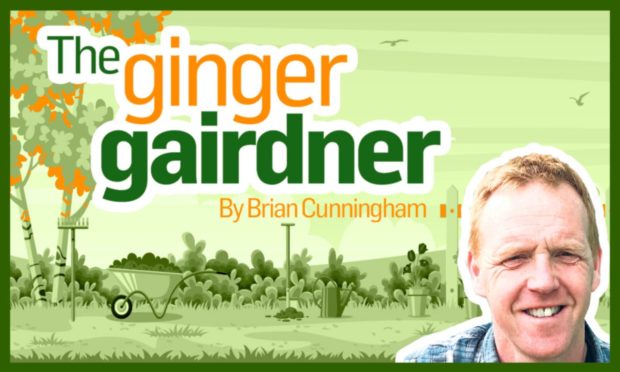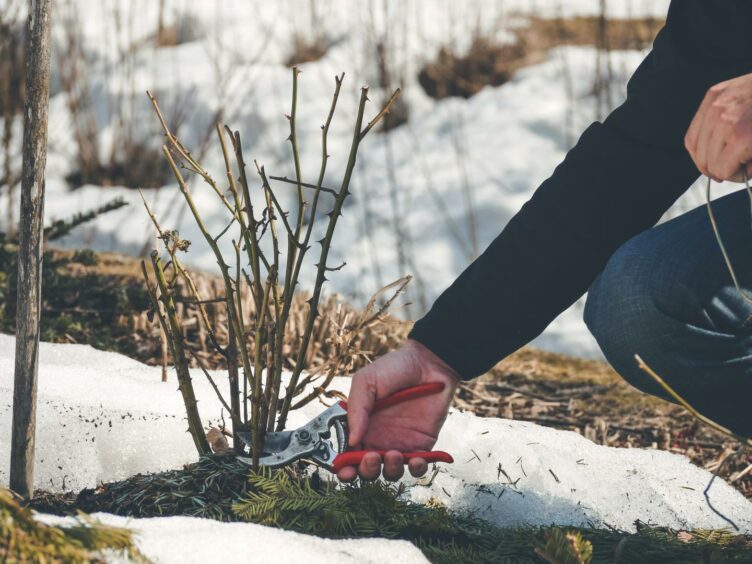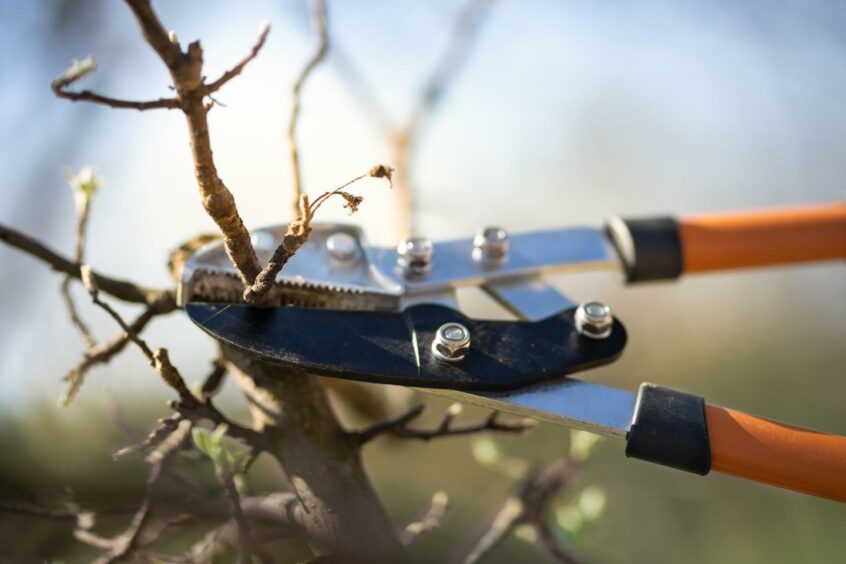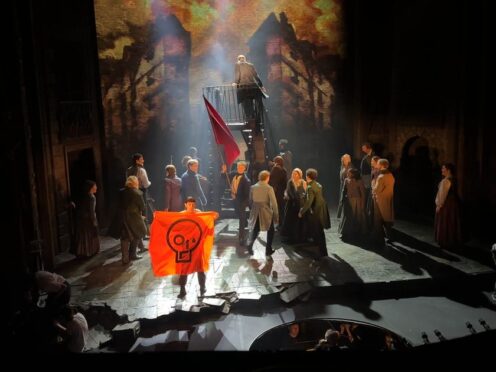For the last few years I’ve had the privilege of being part of the presenting team on BBC Scotland’s iconic gardening programme, Beechgrove.
It’s been on our screens for over 40 years now. being first led by the legendary Jim McColl for the vast majority of this time.
Along with many others from our country’s knowledgeable and skilled gardening community they have been guiding, teaching, inspiring and helping us around our own gardens at home.
Today George Anderson is one of the programme’s main presenters but I’ve had the pleasure of knowing him since my time at the Royal Botanic Gardens Edinburgh.
This was back at the start of the century, where I was a gardener working in the rock garden and he was Head of the School of Horticulture.
I can tell you that the way he comes across on screen- warm, funny, kind and friendly, is exactly how he is in person.
One of the nicest and most generous human beings you will ever meet.
A font of all gardening knowledge
His gardening knowledge is just unbelievable, the man is a walking gardening encyclopaedia and I’ll go as far as say that he, and Jim, have both forgotten more than I’ll ever know.
During this time of year in which we have our loppers and pruning saws out and in action, I always think of George with a wee smile on my face.
He seems to have earned himself the reputation of being a bit heavy handed when it comes to winter pruning.
‘The Beechgrove Butcher’
On the programme we have seen George tackle overgrown shrubs like Viburnum rhytidophyllum.
This is a brilliant back of the border, evergreen shrub that has heavily veined leaves, which we’ve seen being pruned – though some would say ‘hacked’ back – to a skeleton framework.
It hasn’t stopped there either.
The same treatment has been applied to apple trees in a similar state.
We have also seen him take all the growth off a golden willow, Salix alba var vitellina, cutting this hard back to the base of the plant in springtime, leaving nothing left!
Through this kind of work George has earned himself the reputation as being the ‘Beechgrove Butcher’!
We all jest with him to make sure that he leaves some plants in the garden after he wishes to share with us his pruning methods.
But it’s actually magic
However, when we go back later in the series or take a look at his work a few years later, you soon see that he hasn’t been overly brutal at all, but has instead treated us with a touch of his magic.
Now don’t see this as a signal for heading out to the shed, looking out the saws and axes that have been hidden away gathering rust, and begin reducing every woody shrub in your garden to a mere stump. It doesn’t work like that.
There’s a reason George can go into jobs like this with his usual relaxed confidence, whilst the viewers at home tremble at the thought of losing a favourite plant forever.
It’s because he has years of knowledge behind him. Understanding perfectly just what the plant needs to grow to it’s full and glorious potential.
We don’t intend for plants to get too big for their space it’s just happens over time. Each year as we continue to admire them they steadily keep growing until one day we realise we have a problem on our hands.
All our shrubs differ in the way they need to be pruned to keep them in shape and when we need to do this.
First, do your research
First of all it’s important to do a bit of research online or in books, ask a gardening friend or take a picture and enquire at your local garden centre or nursery.
Find out the correct name of the plant you are dealing with which will lead you to finding out the correct way to deal with them.
I have a well-thumbed copy of the Royal Horticultural Society manual of pruning and training.
It has always been my go to book and keeps me guided on what pruning I should be doing just now.
A quick pruning guide
The Japanese Maples we grow for their glorious autumn foliage and Chinese Witch Hazels which are out in flower just now are not vigorous growers.
They only need a light pruning to keep them in shape.
From the main stems, climbing roses need their side shoots cut back to around 3inches/ 7cm, also removing any weak stems that wont be strong enough to hold a bloom.
This will encourage fresh growth which will be more productive meaning for us more flowers!
The message is clear
One of my favourite plants is Clematis tangutica that has nodding yellow flowers from late spring right through to the first frosts.
Unless pruned down to a strong pair of buds 15cm to 30cm above the ground each year, the plant will continue to grow and grow, eventually only flowering above eye level leaving us looking unattractive, bare stems.
If you enjoy the taste of autumn fruiting raspberries then they too need to be cut down to a couple of inches from the ground.
Over the summer fresh new shoots will grow rewarding us in September with juicy fruits.
Some times it may look tough but the message is clear, in George we trust!













